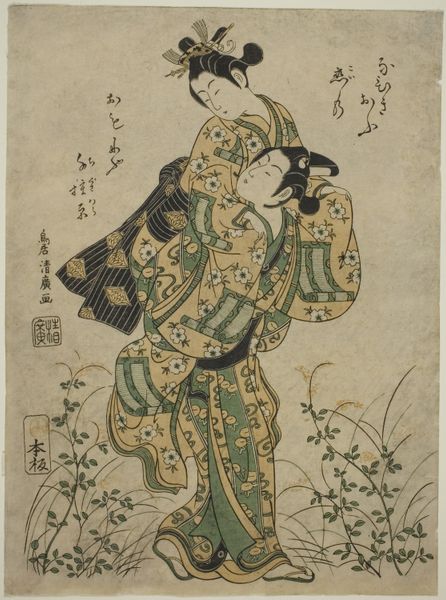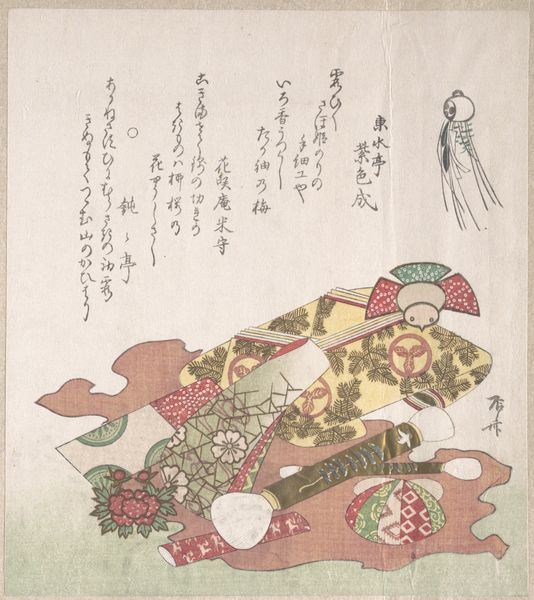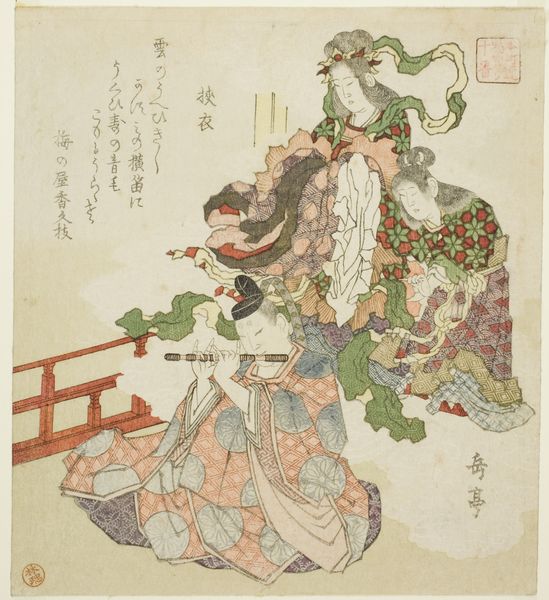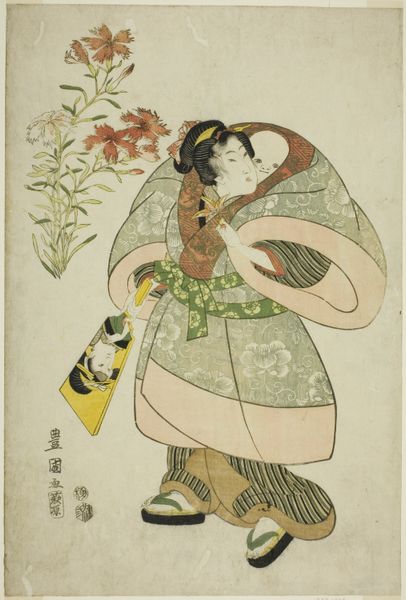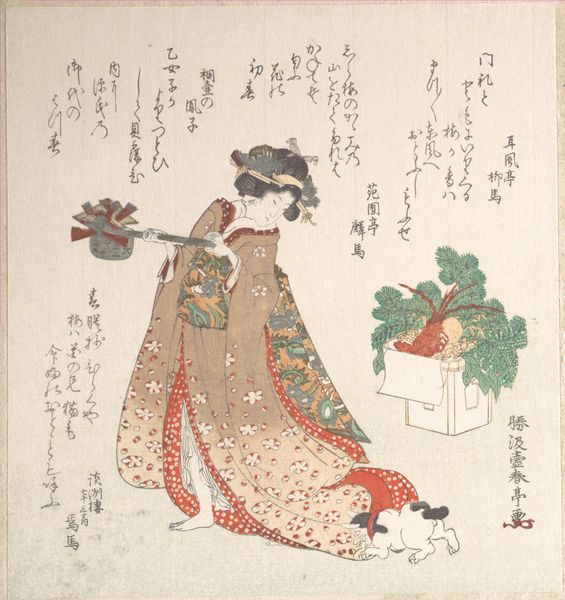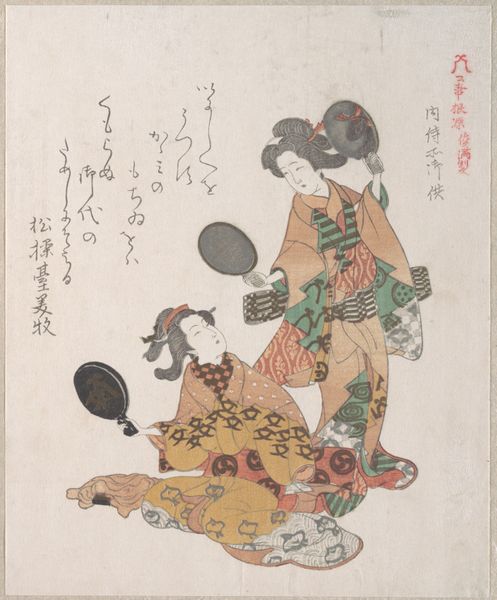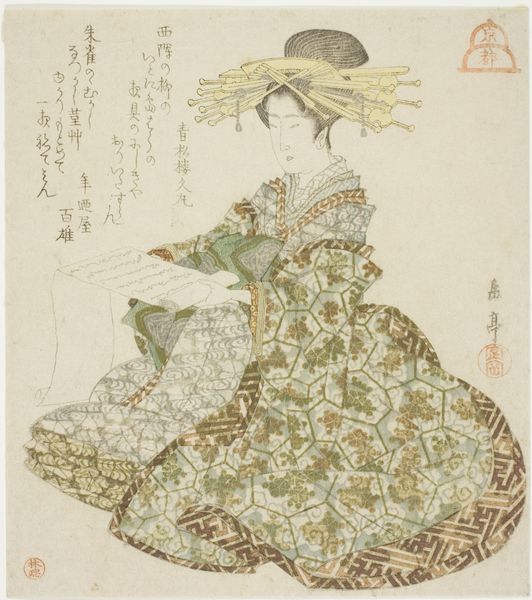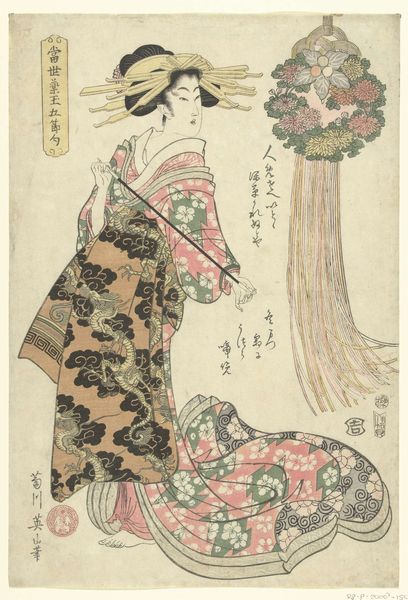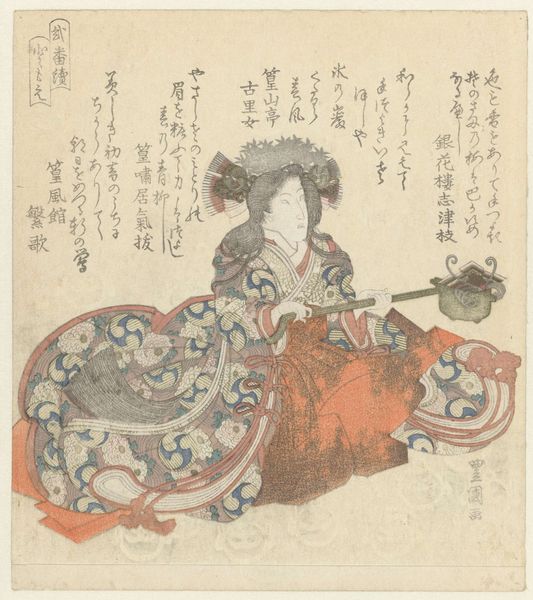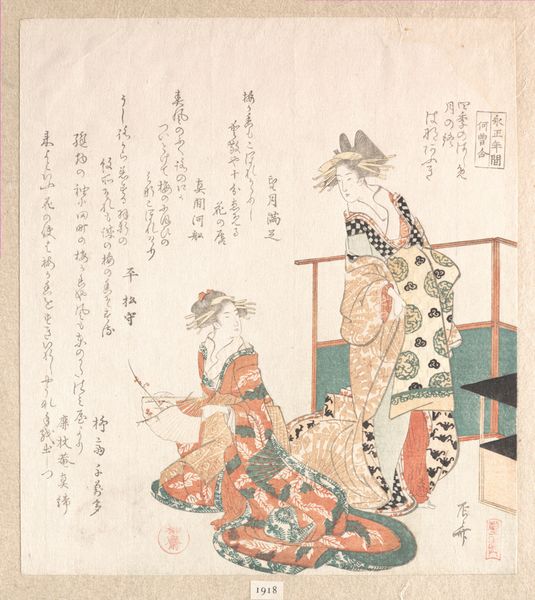
Two Dancers Performing a “Shakkyōmono” Kabuki Dance, from Spring Rain Surimono Album (Harusame surimono-jō), vol. 3 1795 - 1820
0:00
0:00
print, textile, woodblock-print
#
water colours
#
narrative-art
#
ink painting
# print
#
asian-art
#
textile
#
flower
#
ukiyo-e
#
japan
#
figuration
#
personal sketchbook
#
woodblock-print
#
orientalism
#
calligraphy
Dimensions: 8 5/16 x 5 1/2 in. (21.1 x 14 cm)
Copyright: Public Domain
Curator: Before us, we have "Two Dancers Performing a ‘Shakkyōmono’ Kabuki Dance," an exquisite woodblock print by Kubo Shunman, likely created between 1795 and 1820. It’s part of the Spring Rain Surimono Album. Editor: Immediately striking! The earthy tones mixed with floral pastels… It almost feels dreamlike. The dancers, intertwined and seemingly weightless, offer an immediate sense of otherworldly theatricality. Curator: The “Shakkyōmono” Kabuki dance is pivotal. This piece captures not just a performance, but a cultural moment laden with theatrical history and symbolism, reflected in costume and gesture. Editor: Looking at the costumes, I see not just beautiful design, but also commentary. The layering of patterns—the floral print of the robes versus the almost animalistic spots on the lower dancer's garment—hints at the complexities of gender, performance, and identity that kabuki often explored. Who are they playing at the stage? Who they are away of the stage? Curator: Exactly! These prints, circulated within exclusive social circles, performed cultural work. It demonstrated the elite’s knowledge and appreciation for these arts, as they embraced popular narratives through performative social rituals. Editor: There’s an incredible tension between the rigidity of the art form it represents, and the softness of the colour palette and composition. This is what draws me, there is a negotiation to watch with this print, to understand how popular image gets translated to perform and also perform itself, a ritual contained within rituals. The role that beauty and elegance had on representation. Curator: And surimono prints, often commissioned for special occasions, allowed for subtle commentaries to circulate, offering viewers access into specific social and artistic communities. Editor: Yes, a form of underground activism. I am more drawn to think about who are those dancers, that for a few seconds get frozen in representation in popular media, with gender constraints. In any way this piece reminds us to always examine and question those structures around us. Curator: Absolutely, it holds layers of meanings concerning identity and representation in 18th-century Japan. Editor: An evocative portal. Curator: Indeed, it lets us reflect on performance, power, and artistic production.
Comments
No comments
Be the first to comment and join the conversation on the ultimate creative platform.
